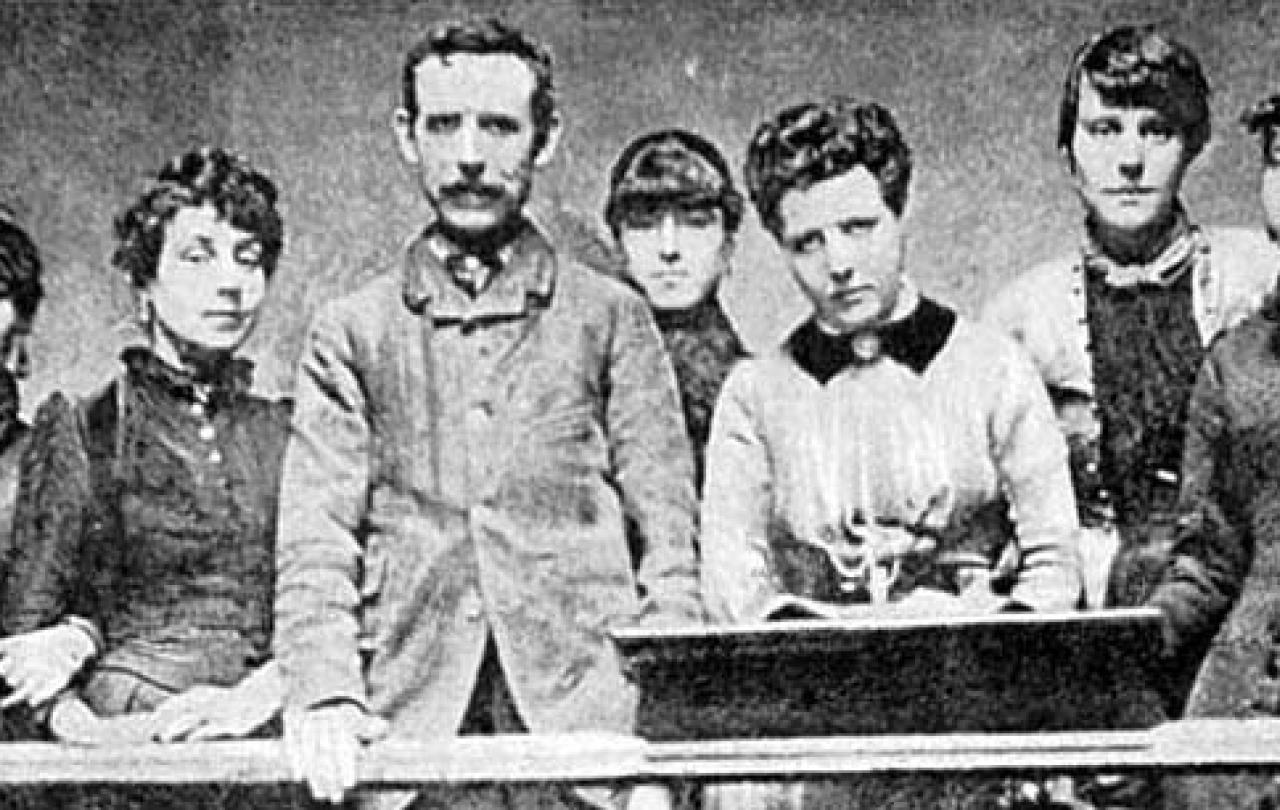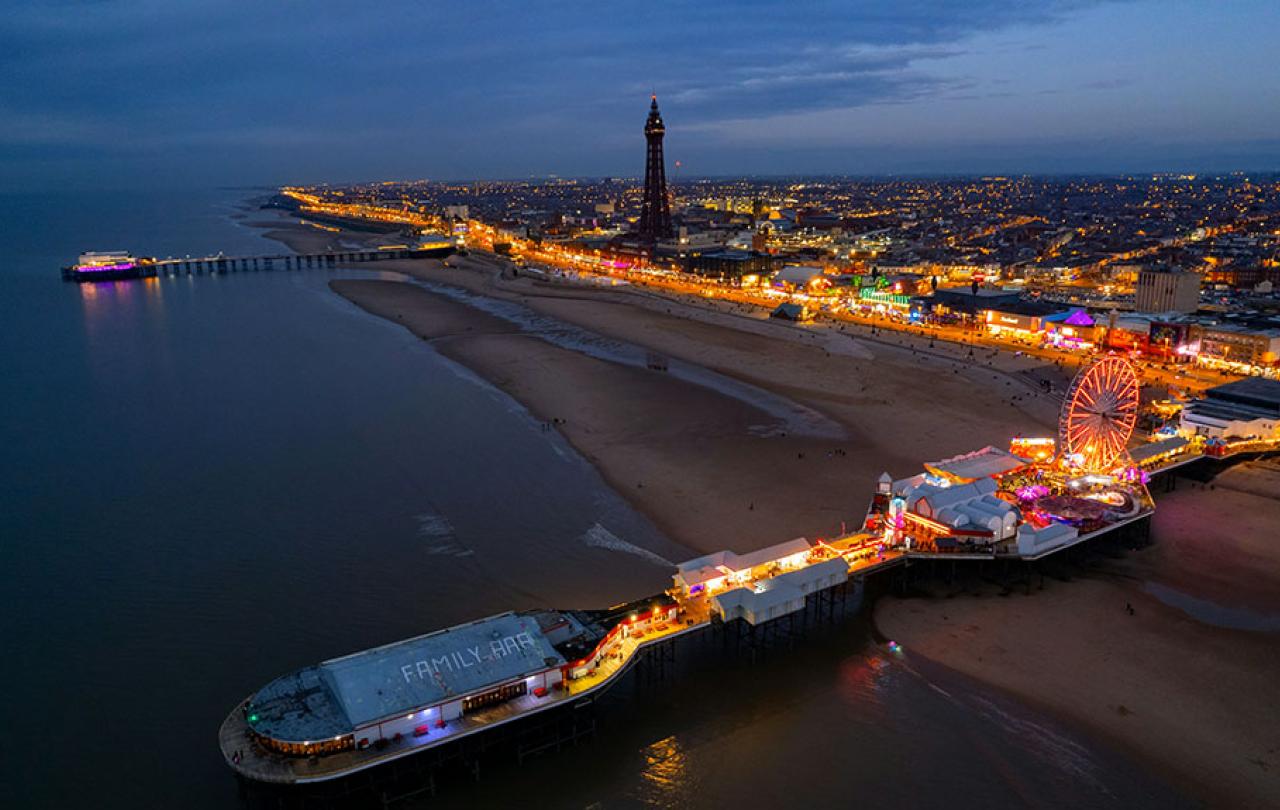
Meta's assets totalled nearly US$230 billion last year; Pinterest’s were over $3.5 billion and Beijing-based ByteDance, parent company of Tik Tok, was valued at $220 billion. Between them they have attracted billions of users, and, enabled by the spread of smartphones, transformed the way that young people especially communicate, spend time alone and carry out friendships.
But parents’ concern at the impact of what their children are viewing, and the tech companies’ slow responses to a drip-drip-drip of teenage deaths linked to harmful online content, have pushed parents’ patience to the limit. In the last month an estimated 20,000 have joined a grassroots protest group – Parents United for a Smartphone-Free Childhood – whose founders are hastily developing a campaign strategy.
This pushback against the march of big tech cannot come soon enough, and if well co-ordinated it could finally give parents a weapon: their numbers.
The stats are becoming all too familiar – half of nine-year-olds own a smartphone and 68 per cent of children as young as three use it to get online. Drill down and it gets more startling: according to a Statista survey of 13-17-year-olds, 30 per cent of TikTok users had seen sexualised images or been trolled anonymously on the platform in the previous month; 14 per cent of respondents who visited YouTube had recently seen “violent or gory” content, and 10 per cent of respondents “had seen images of diet restriction on Instagram”.
But these aren’t the only forms of online harm. I attended a meeting recently in the Palace of Westminster where one speaker argued that just as bad, especially for teenagers, are the algorithms that promote content that leads to peer comparison and discontent, which niggles away at contentment and self-confidence.
The age checks on which they rely will be brought in by the tech companies, who thus far haven’t proven the most trustworthy partners on child safeguarding.
Some of these hi-tech problems will require hi-tech solutions and new laws. But might there also be some far older wisdom that could help us a society chart a course to a safer online experience for young people?
The Government’s finally passed Online Safety Bill marks a pushback, making the tech companies legally responsible for keeping children and young people safe online. It mandates platforms to protect children from “harmful or age-inappropriate” content such as porn, depictions of violence, bullying, and sites promoting anorexia, and platforms will face tougher scrutiny of the measures they take to ensure under-13s can’t have social media accounts.
However, these changes won’t take effect until part way through 2025; the age checks on which they rely will be brought in by the tech companies, who thus far haven’t proven the most trustworthy partners on child safeguarding.
What are parents to do? And increasingly, employers and economists? After all, youth mental health experts were quick to point the finger at social media following the Resolution Foundation research that found five per cent of 20 to 24-year-olds were economically inactive due to ill health last year and 34 per cent of 18 to 24s reported symptoms of mental health conditions such as depression or anxiety – a reversal from two decades ago, when they had the lowest incidence of such disorders at only 24 per cent.
The Department for Education wants heads to ban mobiles in school, which some already do. But what about outside school hours? As one participant and parent at the meeting asked, “Isn’t the genie already out of the bottle?”
Molly and Brianna were not just vulnerable teenagers – they were victims of the powerful machinery of Third and Fourth Industrial Revolutions.
A couple of voices suggested young people needed an engaging real-life alternative to their screens that involved learning to take risks, such as rock-climbing. Another added that young people are too protected in the real world and not protected enough online.
One woman who has felt the sharpest cost of this inadequate protection is Esther Ghey. I would have hoped that the tech companies would be quick to change the ways their platforms work once they knew about the harmful material that her teenager Brianna was able to view online and the violent material her killers were able to discuss online.
But then I hoped the same after 14-year-old Molly Russell took her own life in 2017 having viewed content promoting self-harm and suicide on Instagram. Instead, her family were made to wait two years for Meta, parent company of Instagram, to provide evidence for her inquest. Representatives from Meta and Pinterest apologised at the inquest, five years after her death. Big deal.
Parents can – in theory – enact all parental controls offered by their internet provider, limit screen time and ban phones from their children’s bedrooms at night, although setting and reinforcing boundaries can be exhausting. Esther Ghey said Brianna’s phone usage “was a constant battle between me and her”. Other parents may lack the capacity to, or just not feel the need to, carry out such measures. And it only takes one child to share material for it to become a problem for a whole peer group.
It’s a good step that phones are entering the market that are designed to be safe for children, with parental controls and minimal access to the internet. But they don’t get kids rock-climbing (or your wholesome outdoor team activity of choice), they still normalise children’s phone use, and they require parents to spend more time monitoring their own phones to check their children’s usage.
So what’s to be done?
Molly and Brianna were not just vulnerable teenagers – they were victims of the powerful machinery of Third and Fourth Industrial Revolutions, the rapid advances in tech that have taken computers from the office to the pocket and loaded them up with the capability of dozens of devices combined.
Molly’s father Ian has teamed up with Esther Ghey to work together on holding the tech companies to account. And thanks to Parents United for a Smartphone Free Childhood, other parents now have a way of voicing their fears in a co-ordinated way, to try to prevent the next disaster. Organisers Clare Fernyhough and Daisy Greenwell estimate that already some 20,000 people have joined, from every county across Britain. This is an online campaign for an online age: it was sparked by a post by Greenwell in the fertile soil of Instagram, and communities are organised into WhatsApp groups. Nonetheless, the pair are encouraging parents not to give children smartphones until 14 and social media access until 16, and they have put together resources to help members urge headteachers to restrict, and other parents to delay, smartphone usage.
Examples like William Booth are a reminder that, when it comes to systemic challenges, individuals are not without agency.
But what if these steps aren’t enough? History recalls some impressive David-vs-Goliath campaign victories that could be of use here. In the first Industrial Revolution, exhausted and overworked women and children lost limbs and even lives in the newly invented machinery. According to a landmark report commissioned by the House of Commons in 1832, these workers were often "abandoned from the moment that an accident occurs; their wages are stopped, no medical attendance is provided, and whatever the extent of the injury, no compensation is afforded." Years passed from the creation of these voracious machines to reformers such as Lord Shaftesbury, a politician driven by his Evangelical Christian faith, passing laws to cap children's hours at 58 hours a week and introduce other safeguards.
A few decades later, the Bryant and May match company was employing hundreds of East End women to make matches using white phosphorus, which can cause phosphorus necrosis of the jaw or Phossy Jaw. The employees formed a union and went on strike; the Salvation Army, led by William Booth, another social reformer inspired by his Christian beliefs to help people in poverty, set up their own factory in 1891 offering better working conditions including the use of less toxic red phosphorus. Although their factory only ran for 10 years, the episode spelt bad publicity for Bryant and May and a ban on the use of white phosphorus in matches followed shortly after.
A Salvation Army match box.

Examples like William Booth are a reminder that, when it comes to systemic challenges, individuals are not without agency. But other chapters in history underline that one person’s vision or persistence may need to be amplified by scale to be taken seriously. Had the civil rights activist Rosa Parks, who in 1955 refused to give up her seat for a white passenger, boycotted the buses alone, the authorities in Montgomery would have shrugged their shoulders. But when 40,000 other Black passengers, led by Rev Martin Luther King, joined her, the authorities could not afford to ignore them.
So how do these three stories relate to young people’s social media use?
The harmful effects of social media are a global issue, and if tech companies boast revenues greater than the GDP of several countries, governments may need to work together to get them to listen. And any calls from governments for better regulation and self-policing will be amplified if backed up by millions of parents.
Perhaps we’re seeing the start of this: if the thousands of Parents United for a Smartphone Free Childhood can grow in number and start conversations with schools and other parents, then the demand for smartphones and their dominance of some young people’s lives can be challenged. Such conversations can’t come soon enough. But how can parents make themselves heard? And what do nineteenth-century industrialists, East End match girls or 1950s African Americans have to do with it?
The parallel, in Christian jargon, is the undervaluing of the human person. The tech companies do not just exist to help us stay in touch with our friends or look cooler. So bear with me, if you will, for a thought exercise.
In short, and I wince: adults’ relationship with smartphones needs to be rethought just as much as children’s.
The Shaftesburies of our day need to ensure existing laws are applied, that the tech companies’ promised age controls are water-tight, and harsh penalties are applied for platforms that fail to take down harmful or illegal content. The William Booths need to provide alternatives to dopamine-inducing social media, that affirm the value of each young person and teach them to manage real-world, appropriate levels of risk. Hence the suggestion of rock-climbing or similar. And could we also imagine social network being conceived, funded and constructed on European soil which takes the wellbeing of its users seriously? And some form of online policing?
In the meantime, the Rosa Parks of our age – which is all of us social media users, and Parents United for a Smartphone Free Childhood could lead the way – must consider investing in a dumb phone and enacting a smartphone boycott, at least outside our professional lives. The half of nine-year-olds who reportedly own smartphones can’t buy or fund them themselves; therefore, pretty much half of parents of nine-year-olds have passed theirs on or bought new ones and kept paying the bills. That gives them leverage.
Leading by example would also mean parents swapping their own smartphones for dumbphones – at least in front of their children. An old laptop could be kept in the kitchen for searches that then become public, functional and brief – just like twentieth-century dips into the Phone Book or Yellow Pages. Smartphone ownership could be seen as a privilege of maturity like drinking, learning to drive and (previously) smoking, and doom-scrolling in front of children blacklisted. In short, and I wince: adults’ relationship with smartphones needs to be rethought just as much as children’s.
The reforms of Shaftesbury and others and the ban on white phosphorus helped lay the foundation for today’s health and safety laws. The bus boycott was a key step in the Civil Rights Movement’s long and hard-fought journey towards equality.
The tragic, needless loss of the lives of Brianna and Molly (and, sadly, others) must lead to laws and a wider social rethink that lay the foundations for a safer, more grown-up, properly regulated, internet age. We need to set ourselves on a course from where future generations will look back aghast, just as we do on child labour or white phosphorus or racial segregation, and ask, ‘What were they thinking?’

